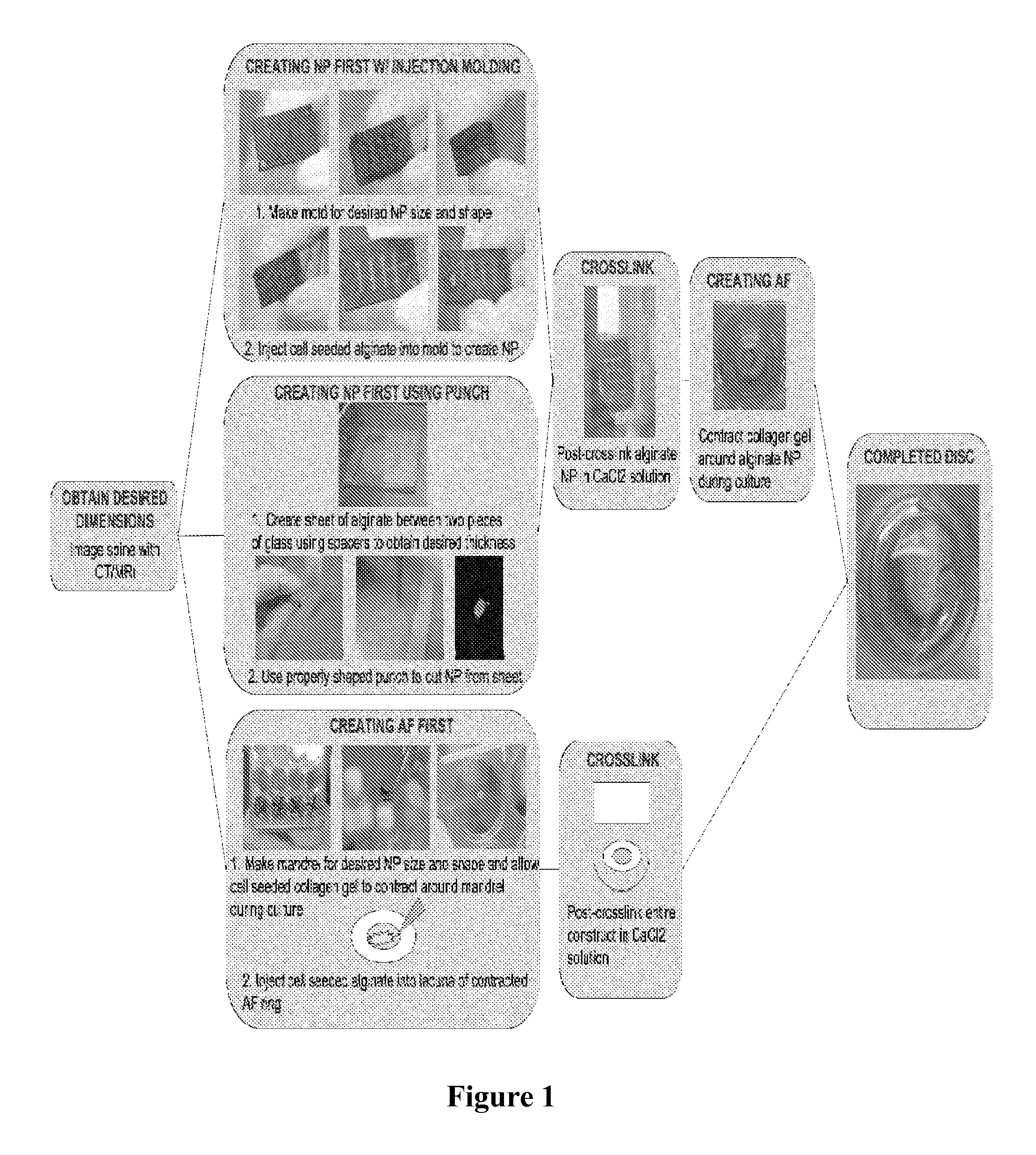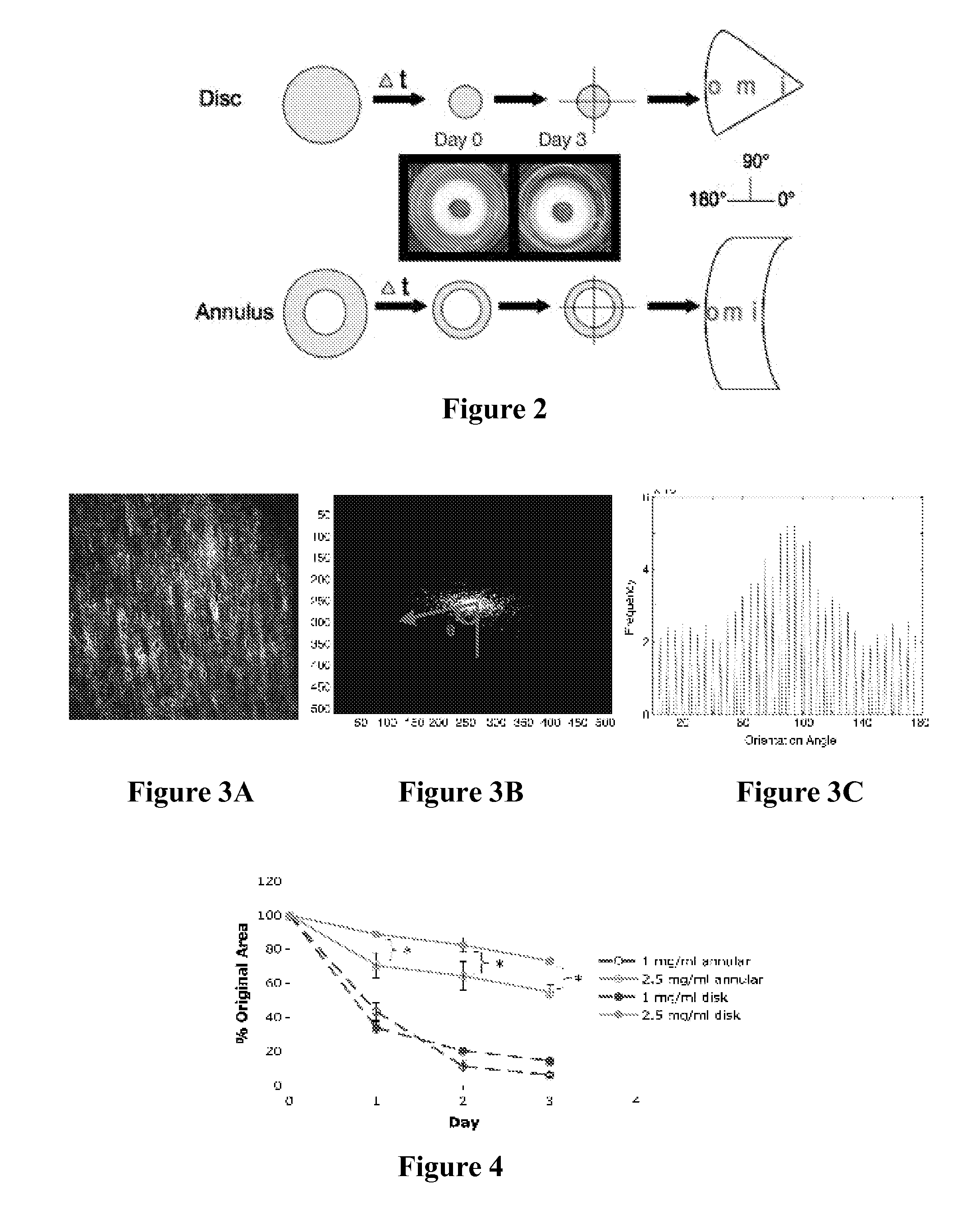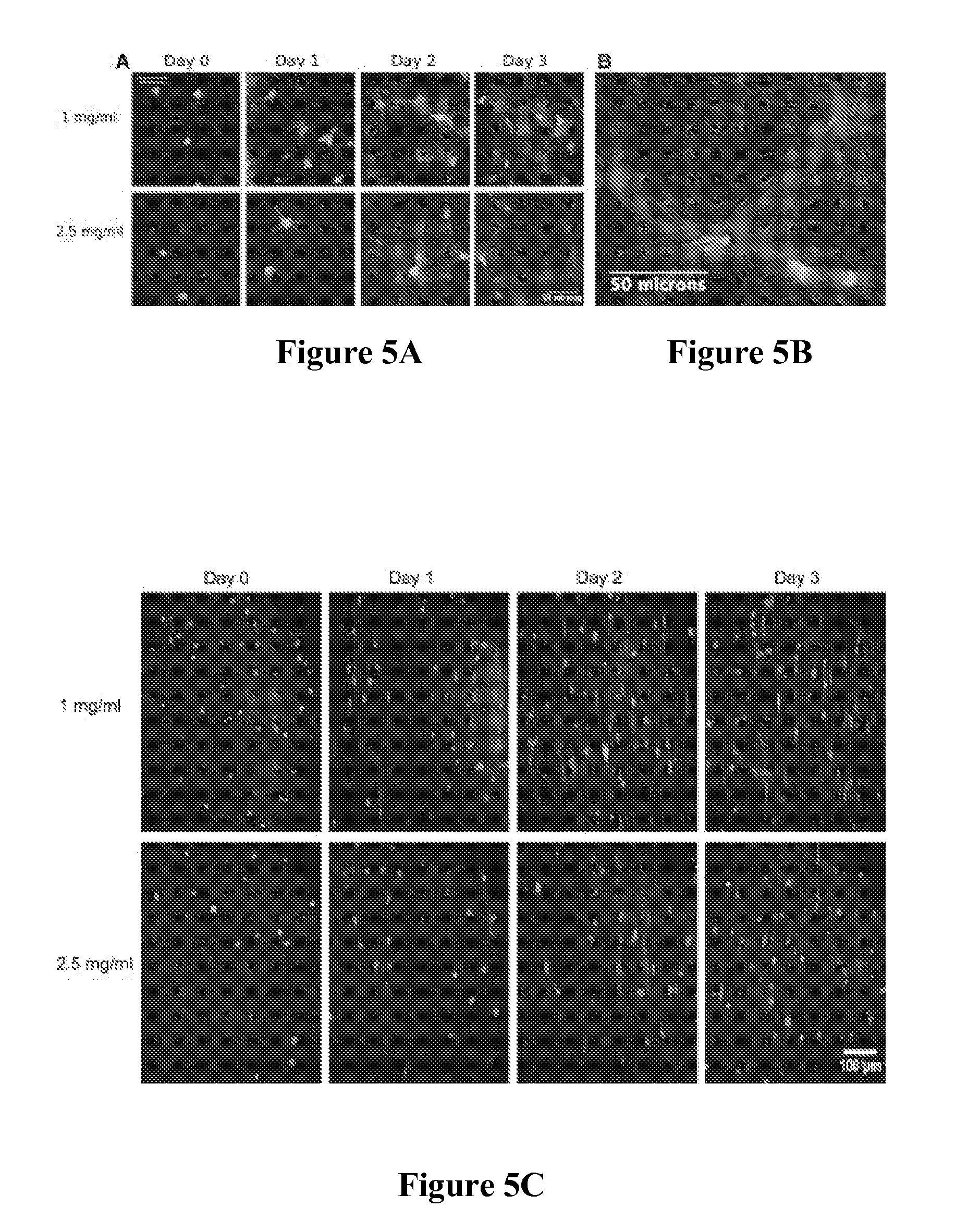Composite tissue-engineered intervertebral disc with self-assembled annular alignment
a tissue-engineered, annular alignment technology, applied in the field of tissue-engineered intervertebral discs, can solve the problems of ddd growth, limited treatment options, and inability to address the underlying cause, and achieve the effect of remarkable ability to restore function
- Summary
- Abstract
- Description
- Claims
- Application Information
AI Technical Summary
Benefits of technology
Problems solved by technology
Method used
Image
Examples
example 1
Self-Assembly of Aligned Tissue-Engineered Annulus Fibrosus and Intervertebral Disc Composite Via Collagen Gel Contraction
[0092]Using collagen gels seeded with ovine annulus fibrosus cells, constructs of varying structure and heterogeneity were created to mimic the circumferential alignment of the IVD. Alignment was induced within gels by contracting annular gels around an inner boundary using both a polyethylene center and alginate center to create a composite engineered IVD. Collagen alignment and heterogeneity were measured using second harmonic generation microscopy. Decreasing initial collagen density from 2.5 mg / mL to 1 mg / mL produced greater contraction of constructs, resulting in gels that were 55% and 6.2% of the original area after culture, respectively. As a result, more alignment occurred in annular-shaped 1 mg / mL gels compared with 2.5 mg / mL gels (p<0.05). This alignment was also produced in a composite-engineered IVD with alginate nucleus pulposus. The resulting collag...
example 2
Cell Preparation
[0093]The cell preparation techniques were based on previously described techniques (Mizuno et al., “Biomechanical and Biochemical Characterization of Composite Tissue-Engineered Intervertebral Discs,”Biomaterials 27(3):362-70 (2006), which is hereby incorporated by reference in its entirety). Sixteen IVDs were dissected out of the lumbar spine region of four adult skeletally mature (14 month old) Finn / Dorset cross male sheep (Cornell University Sheep Program, Ithaca, N.Y.) and washed in phosphate-buffered saline (“PBS”) (Dulbecco's PBS; Gibco BRL, Grand Island, N.Y.). The AF region of the discs was separated from the NP and dissected into small pieces that were digested in 200 mL of 0.3% w / v collagenase type II (Cappel Worthington Biochemicals, Malvern, Pa.) at 37° C. for 9 h. Digested tissue was filtered through a 100 mm nylon mesh (BD Biosciences, Bedford, Mass.) and centrifuged at 936 g for 7 min. The cells were washed three times in PBS, counted, and seeded at a...
example 3
Collagen Solution Preparation and Collagen Construct Fabrication
[0094]Collagen type I was obtained from rat tails using established protocols (Pel-Freez Biologicals, Rogers, Ariz.) (Elsdale and Bard, “Collagen Substrata for Studies on Cell Behavior,”J. Cell Biol. 54:626-37 (1972), which is hereby incorporated by reference in its entirety). Briefly, tendons were dissected from rat tails and transferred to a solution of dilute acetic acid (0.1%) at a volume of 80 mL / g of tendon at 48° C. for 48 h. The solution was centrifuged at 9000 rpm, and the supernatant was transferred and centrifuged a second time to remove the unsolubilized collagen, blood, and muscle tissue. The solution was then subjected to the bicinchoninic acid assay (Pierce, Rockford, Ill.) to determine the collagen concentration of the resulting solution. The stock solution was stored at 48° C. until needed.
[0095]Before producing gels, tissue culture plates were incubated with a 2% bovine serum albumin solution at 37° C....
PUM
| Property | Measurement | Unit |
|---|---|---|
| concentration | aaaaa | aaaaa |
| concentration | aaaaa | aaaaa |
| concentration | aaaaa | aaaaa |
Abstract
Description
Claims
Application Information
 Login to View More
Login to View More - R&D
- Intellectual Property
- Life Sciences
- Materials
- Tech Scout
- Unparalleled Data Quality
- Higher Quality Content
- 60% Fewer Hallucinations
Browse by: Latest US Patents, China's latest patents, Technical Efficacy Thesaurus, Application Domain, Technology Topic, Popular Technical Reports.
© 2025 PatSnap. All rights reserved.Legal|Privacy policy|Modern Slavery Act Transparency Statement|Sitemap|About US| Contact US: help@patsnap.com



